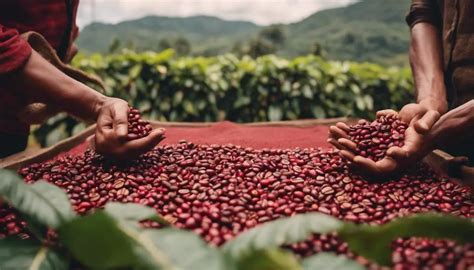The aromatic world of coffee has been a staple of human culture for centuries, with its rich flavors and invigorating effects captivating the senses of people from all walks of life. From its humble beginnings in Ethiopia to its current status as a global phenomenon, coffee has undergone a remarkable journey, shaped by the interactions of traders, travelers, and connoisseurs. In this comprehensive exploration, we’ll delve into the fascinating history of coffee, uncovering the secrets behind its distinctive flavors and the intricate processes that have contributed to its enduring popularity.
To understand the complexities of coffee, it’s essential to start with its origins. Legend has it that coffee was first discovered in Ethiopia by a goatherd named Kaldi, who noticed that his goats became more energetic after eating the red berries of a certain plant. From there, coffee spread throughout the Arabian Peninsula, where it was cultivated and traded extensively. The Arabs were responsible for the first commercial cultivation of coffee and for developing many of the techniques that are still used today, such as roasting and brewing.
As trade routes expanded, coffee began to reach other parts of the world, including Europe, where it became a popular drink among the intellectual and artistic communities. The first coffeehouses were established in Italy and England, providing a hub for socializing, debating, and creative pursuits. These early coffeehouses played a significant role in shaping the cultural and intellectual landscape of Europe, fostering an environment where innovative ideas and artistic expression could thrive.
One of the key factors that contributed to coffee’s widespread popularity was the development of new brewing methods. The traditional Turkish method, which involved finely grinding the coffee beans and brewing them in a small pot called an ibrik or cezve, was popular in the Middle East and Europe. However, it was the invention of the espresso machine in the late 19th century that revolutionized the way coffee was consumed. The espresso machine allowed for the rapid production of concentrated coffee shots, which could be served on their own or used as the base for a variety of popular coffee drinks, such as lattes and cappuccinos.
The art of coffee roasting is another crucial aspect of the coffee-making process, with different roasting levels and techniques capable of producing a wide range of flavors and aromas. Lighter roasts tend to preserve more of the coffee’s natural acidity and fruit notes, while darker roasts bring out deeper, richer flavors with hints of chocolate and caramel. The roasting process itself involves heating the green coffee beans to high temperatures, causing them to expand and change color, with the resulting roasted beans then being cooled and packaged for distribution.
In addition to the various brewing and roasting methods, coffee has also been shaped by the interactions of different cultures and traditions. From the elaborate coffee ceremonies of Ethiopia to the vibrant coffeehouse cultures of Europe and the Middle East, coffee has played a significant role in bringing people together and fostering social connections. In many parts of the world, coffee is an integral part of daily life, with the ritual of drinking coffee providing a moment of pause and reflection in an otherwise busy and hectic world.
For those seeking to unlock the rich flavor secrets of coffee, there are several key factors to consider. First and foremost, the quality of the coffee beans themselves is paramount, with factors such as the coffee’s origin, altitude, and processing method all contributing to its unique flavor profile. The roast level and brewing method also play a critical role, with different combinations capable of producing a wide range of flavors and aromas. Finally, the equipment and techniques used in the brewing process can also have a significant impact, with variables such as water temperature, coffee-to-water ratio, and brewing time all capable of affecting the final flavor.
What are the main factors that contribute to the flavor of coffee?
+The main factors that contribute to the flavor of coffee include the coffee's origin, altitude, processing method, roast level, and brewing method. Additionally, the equipment and techniques used in the brewing process can also have a significant impact on the final flavor.
How does the roast level affect the flavor of coffee?
+The roast level can significantly affect the flavor of coffee, with lighter roasts tend to preserve more of the coffee's natural acidity and fruit notes, while darker roasts bring out deeper, richer flavors with hints of chocolate and caramel.
What is the difference between Arabica and Robusta coffee beans?
+Arabica and Robusta are the two main species of coffee beans, with Arabica being considered to be of higher quality and having a more delicate flavor. Robusta, on the other hand, has a bolder, more bitter flavor and is often used as a base for instant coffee.
In conclusion, the history of coffee is a rich and complex one, with the beverage having undergone a remarkable journey from its humble beginnings in Ethiopia to its current status as a global phenomenon. By understanding the various factors that contribute to the flavor of coffee, from the coffee’s origin and roast level to the brewing method and equipment used, coffee enthusiasts can unlock the rich flavor secrets of this beloved beverage and appreciate its many nuances and complexities. Whether you’re a seasoned coffee connoisseur or just starting to explore the world of coffee, there’s no denying the captivating allure of this ancient and revered drink.



